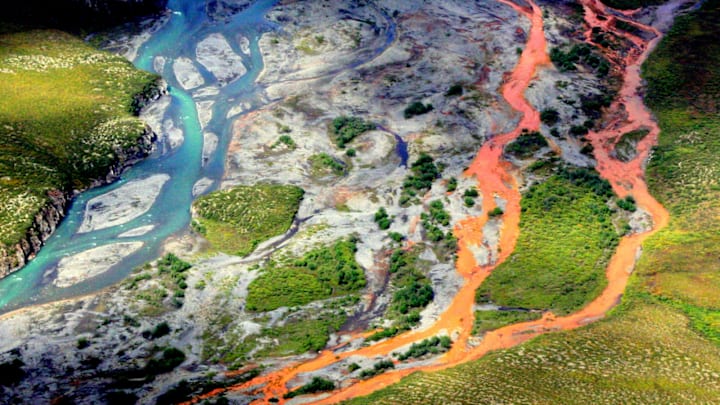Hikers trekking through Kobuk Valley National Park in Alaska during the summer of 2017 would have enjoyed a vista that puts postcards and Bob Ross paintings to shame: a seemingly endless landscape of mountains, pine trees, and crystal-clear streams.
Those who visited the park a year later, in August 2018, had quite a different experience. The mountains and pine trees were still there, but the clear streams, specifically those connected to the Akillik River, were colored a shocking rusty orange.
Far from a happy little accident, this kind of phenomenon has been happening more and more often in recent years. According to a new study in the journal Nature Communications Earth & Environment, it’s likely because climate change in the Arctic is freeing a host of toxic minerals from the frozen soil.

Researchers from the University of California-Davis, the National Park Service, and other institutions sampled water from 75 streams in the state’s northern half. They found increased concentrations of iron, mercury, and other heavy metals.
These substances originated from permafrost, frozen ground that, thanks to Alaska’s incredibly cold climate, has remained undisturbed for millennia. But now, if the global average temperature increases by 3°C, up to 85 percent of the world’s upper permafrost layers could thaw by the end of the century. Contamination of Alaska’s delicate ecosystems may worsen as time passes.
Stuck on the frontlines of this development are the state’s beloved national parks and the large number of animals, plants, and people that rely on them. The study reports that Kobuk Valley National Park has already witnessed a “considerable decrease” in stream biodiversity as a result of the orange onslaught, with the influx of heavy metals affecting the populations of fish species like Dolly Varden, chum salmon, and Arctic grayling—not to mention the smaller plants and animals on which they feed, as well as their natural predators.

Drinking water presents another cause for concern. Many people on the Alaskan frontier live in remote communities and get their water from nature rather than supermarkets. While arsenic and lead concentrations in the Akillik River do not yet exceed World Health Organization or Environmental Protection Agency criteria, concentrations of cadmium, nickel, and manganese do.
In most cases, these levels don’t do anything except slightly alter the water’s taste. However, in some rural areas, including the coastal village of Kivalina, located near Cape Krusenstern National Monument on the Wulik River, contamination has gotten so bad that rations of bottled water had to be flown in from the south. As global warming and permafrost thawing continue, similar measures might also need to be taken for other communities.
